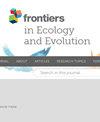比较系统地理学--提高极地生物群落复原力和脆弱性评估效率的工具
IF 2.4
3区 环境科学与生态学
Q2 ECOLOGY
引用次数: 0
摘要
南大洋底栖生物极为丰富多样,管理条约和公约错综复杂,地缘政治疆界使其更加复杂。传统上,保护管理主要以物种清单为依据,在有数据的情况下,以已知的分类群脆弱性为补充。然而,在南大洋这样一个幅员辽阔、难以进入、研究不足的地区,有关生态学、生态生理学、生活史甚至物种身份的知识都存在巨大差距。保护生物地理学确定的是受保护的区域,而不是逐个物种的方法,但也依赖于从物种名录中获得高质量的存在数据,因此,如果物种名录不准确或物种总体描述不清,这两种方法都会受到影响。此外,这些数据只是当前物种多样性的一个缩影,不足以确定所发现模式的基本过程。确定形成多样性(物种或遗传)的共同历史进程,可以在不同组合和地区之间进行推广,为保护政策和决策提供更有力的依据。在本研究中,我们主要基于对南大洋片脚类动物的研究,讨论了使用物种列表所固有的挑战、遗传分析的能力和局限性,并重新审视了以前提出的建立多样性空间模型的建议,该模型包括超越简单物种多样性方法的基本进化关系,适用于集合体而不仅仅是单个类群。本文章由计算机程序翻译,如有差异,请以英文原文为准。
Frontiers | Comparative phylogeography, a tool to increase assessment efficiency of polar assemblage resilience and vulnerability
The Southern Ocean benthos is remarkably rich and diverse, and managed under a complexity of treaties and conventions, further complicated by geopolitical boundaries. Traditionally, conservation management is largely informed by species lists augmented, when data are available, by known vulnerability of the taxa. Species presence absence database resources are valuable tools with proven and positive management outcomes, however, in a vast, difficult to access and thus understudied region such as the Southern Ocean, there are large gaps in knowledge regarding the ecology, ecophysiology, life history and even species identity. Conservation biogeography identifies regions of conservation concern, rather than a species-by-species approach, but also relies on the availability of high-quality presence data from species lists and thus both approaches are undermined when species lists are inaccurate or species in general are poorly described. In addition, the data provide a snapshot of the current species diversity and have inadequate power to identify the processes underlying the patterns uncovered. Identifying historical processes common to shaping diversity (species or genetic) can be generalized across assemblages and regions, providing a more robust basis for conservation policy and decisions. In this study, largely based on consideration of Southern Ocean ophiuroids, we discuss the challenges inherent in using species lists, the power and limitations of genetic analyses, and revisit previous suggestions of building a spatial model of diversity that includes underlying evolutionary relationships transcending the simple species diversity approach, and that is applicable to assemblages, rather than just to individual taxa.
求助全文
通过发布文献求助,成功后即可免费获取论文全文。
去求助
来源期刊

Frontiers in Ecology and Evolution
Environmental Science-Ecology
CiteScore
4.00
自引率
6.70%
发文量
1143
审稿时长
12 weeks
期刊介绍:
Frontiers in Ecology and Evolution publishes rigorously peer-reviewed research across fundamental and applied sciences, to provide ecological and evolutionary insights into our natural and anthropogenic world, and how it should best be managed. Field Chief Editor Mark A. Elgar at the University of Melbourne is supported by an outstanding Editorial Board of international researchers. This multidisciplinary open-access journal is at the forefront of disseminating and communicating scientific knowledge and impactful discoveries to researchers, academics and the public worldwide.
Eminent biologist and theist Theodosius Dobzhansky’s astute observation that “Nothing in biology makes sense except in the light of evolution” has arguably even broader relevance now than when it was first penned in The American Biology Teacher in 1973. One could similarly argue that not much in evolution makes sense without recourse to ecological concepts: understanding diversity — from microbial adaptations to species assemblages — requires insights from both ecological and evolutionary disciplines. Nowadays, technological developments from other fields allow us to address unprecedented ecological and evolutionary questions of astonishing detail, impressive breadth and compelling inference.
The specialty sections of Frontiers in Ecology and Evolution will publish, under a single platform, contemporary, rigorous research, reviews, opinions, and commentaries that cover the spectrum of ecological and evolutionary inquiry, both fundamental and applied. Articles are peer-reviewed according to the Frontiers review guidelines, which evaluate manuscripts on objective editorial criteria. Through this unique, Frontiers platform for open-access publishing and research networking, Frontiers in Ecology and Evolution aims to provide colleagues and the broader community with ecological and evolutionary insights into our natural and anthropogenic world, and how it might best be managed.
 求助内容:
求助内容: 应助结果提醒方式:
应助结果提醒方式:


